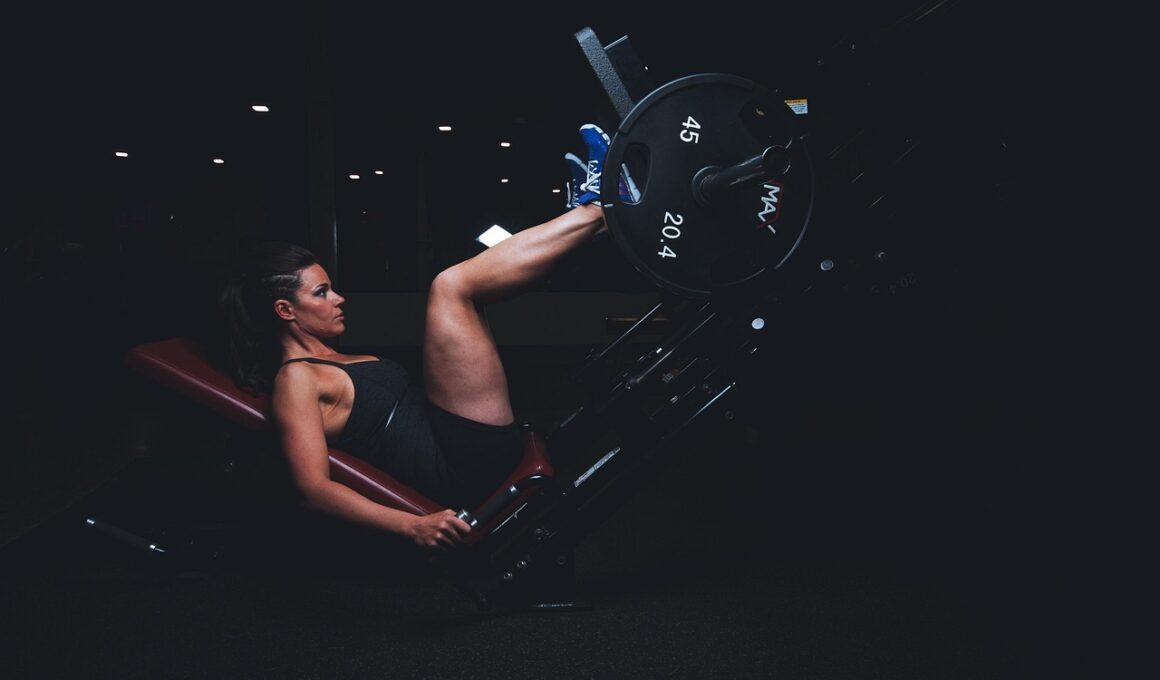Build Strength Fast with These Beginner Calisthenics Routines
Calisthenics workouts can be a fantastic way to build strength and endurance without the need for any equipment. This form of exercise uses your body weight to create resistance, helping to develop muscle tone and core strength effectively. Beginners are often encouraged to start with fundamental movements that activate multiple muscle groups, providing a well-rounded workout. Exercises like push-ups, squats, planks, and lunges not only help in increasing strength but also improve flexibility and coordination. As you gain confidence and strength, you can incorporate variations and more challenging moves. A key benefit of calisthenics is that it can be performed anywhere, whether you’re at home, outside, or in a park. Consistency is critical to see real improvements over time. Aim to practice these exercises several times a week, gradually increasing the intensity or duration of each workout. Don’t forget to warm up properly to prevent injuries and cool down afterward. Focus on maintaining proper form throughout each exercise to reap the maximum benefits. Nutrition and hydration are equally important partners in your fitness journey.
Understanding Key Exercises
The foundation of any successful calisthenics regimen lies in understanding its fundamental exercises. These movements are not only easy to learn but also serve as building blocks for more advanced routines. Push-ups are an exceptional way to strengthen your chest, shoulders, and triceps. As you master this basic exercise, you can progress to variations such as incline and decline push-ups, which can increase difficulty. Squats are another cornerstone; they work your legs, glutes, and core. Proper form is crucial, so ensure your knees don’t extend beyond your toes. Jump squats can be introduced later for adding an explosive power aspect. Planks are essential for core stability and can be modified in various ways to challenge different muscle groups. Incorporate side planks and plank-to-push-up transitions for variety and increased engagement. Lunges, both forward and sideways, are also great for leg and core strength. As you become comfortable with these movements, you can explore incorporating other elements like pull-ups and dips, which provide a full-body workout experience.
In order to create a balanced workout routine, it’s important to combine strength training with flexibility and mobility exercises. Stretching before and after workouts plays a crucial role in preventing injuries and improving your overall performance. Dynamic stretches like arm circles and leg swings can prepare your body for the movements ahead. After workouts, static stretching for specific muscle groups such as arms, legs, and back can enhance flexibility. This cool-down process is essential for recovery and maintaining muscle elasticity. During your calisthenics journey, consider focusing on mastering one new exercise every week. This not only keeps the routine fresh, but it also allows you to track your progress effectively. If you’re struggling with specific movements, don’t hesitate to break them down into smaller achievable steps. For instance, if a full push-up seems daunting, starting with knee push-ups can be a great alternative. Gradually incorporating more complex variations will help build your confidence. Don’t overlook the importance of rest days; your muscles need time to recover and grow stronger between workouts.
Creating a Workout Plan
Developing a structured workout plan is key to achieving your fitness goals. As a beginner, aim for at least three to four workout sessions each week, gradually increasing frequency as your strength improves. Each session should ideally incorporate a mix of upper body, lower body, and core exercises. A sample workout could include circuits that alternate strength-building movements with short rests to maximize efficiency. Start each workout with a warm-up that lasts around five to ten minutes to prime your muscles and joints. Following the warm-up, you could perform a circuit that includes three sets of various exercises, such as push-ups, squats, and planks, allowing for about thirty seconds of rest between sets. Including a cooldown phase is equally crucial to your routine; reserve at least five minutes for stretching to promote flexibility and ease muscle tension post-exercise. As you progress, feel free to adapt the number of repetitions and the intensity of your workouts, aiming for a challenge without compromising your form.
Tracking your progress in calisthenics is vital to maintaining motivation and developing a routine. Keeping a workout journal can help you log the exercises, rounds, repetitions, and time spent on each. Watching your improvements over time is incredibly rewarding. You might notice yourself performing more push-ups or holding a plank for longer durations, which are tangible signs of progress. There are various apps available that can facilitate this tracking, providing additional resources and community support. Joining calisthenics forums or communities can also enrich your experience, offering tips and motivation from others on similar journeys. Engage with personal trainers for guided feedback or consider attending a few classes if available. This practical companionship can enhance your techniques and push you to new limits. Moreover, consistency in your practice will help you establish a solid foundation for future workouts. Keep your goals realistic and adjust as necessary; it is essential to listen to your body. If you’re feeling fatigued, it’s perfectly acceptable to take a day off to recuperate.
The Importance of Nutrition
Nutrition plays a fundamental role in supporting your calisthenics training. Ensure your diet includes a balanced mix of carbohydrates, proteins, and healthy fats to fuel your workouts. Carbs provide the necessary energy for your training sessions, while proteins are crucial for muscle repair and growth. Incorporate lean protein sources, such as chicken, fish, and legumes. Whole grains, fruits, and vegetables are rich in nutrients that support overall health. Consider the timing of your meals; eating a healthy snack before working out can provide an energy boost. Post-workout nutrition is also essential; consuming protein and carbs after exercise aids recovery. Hydration should not be overlooked either. Drink water before, during, and after workouts, as proper hydration influences performance and recovery. Avoid excessive processed foods and sugars, as they can lead to fatigue during your workouts. Preparing meals in advance can help maintain a healthy diet amidst a busy schedule, allowing you to stay on track. Always remember that no amount of training can substitute for a poor diet, so prioritize nutrition as part of your fitness journey.
Finally, as you navigate through your calisthenics workouts, remember that patience and perseverance are key. Progress might seem slow at times, but steady effort will yield results. Celebrate small milestones, whether it’s completing an extra set or increasing your hold on a plank. Surround yourself with a supportive community, whether that’s through social media, local groups, or online forums. Sharing your fitness journey with others will provide motivation and accountability. Setting long-term goals can help keep you centered and focused; these should be realistic, measurable, and time-bound, allowing you to visualize your success. Over time, your body will adapt, and you might find yourself ready to explore more complex calisthenics maneuvers, such as muscle-ups and handstands. These make for exciting challenges, ensuring your workouts remain engaging and adventurous. Consult online resources or guides for techniques on transitioning to these advanced moves when the time is right. As you grow stronger, always prioritize safety and proper technique to avoid injuries. In the end, enjoy the journey, and aim for a healthier lifestyle enriched with strength, flexibility, and well-being.


